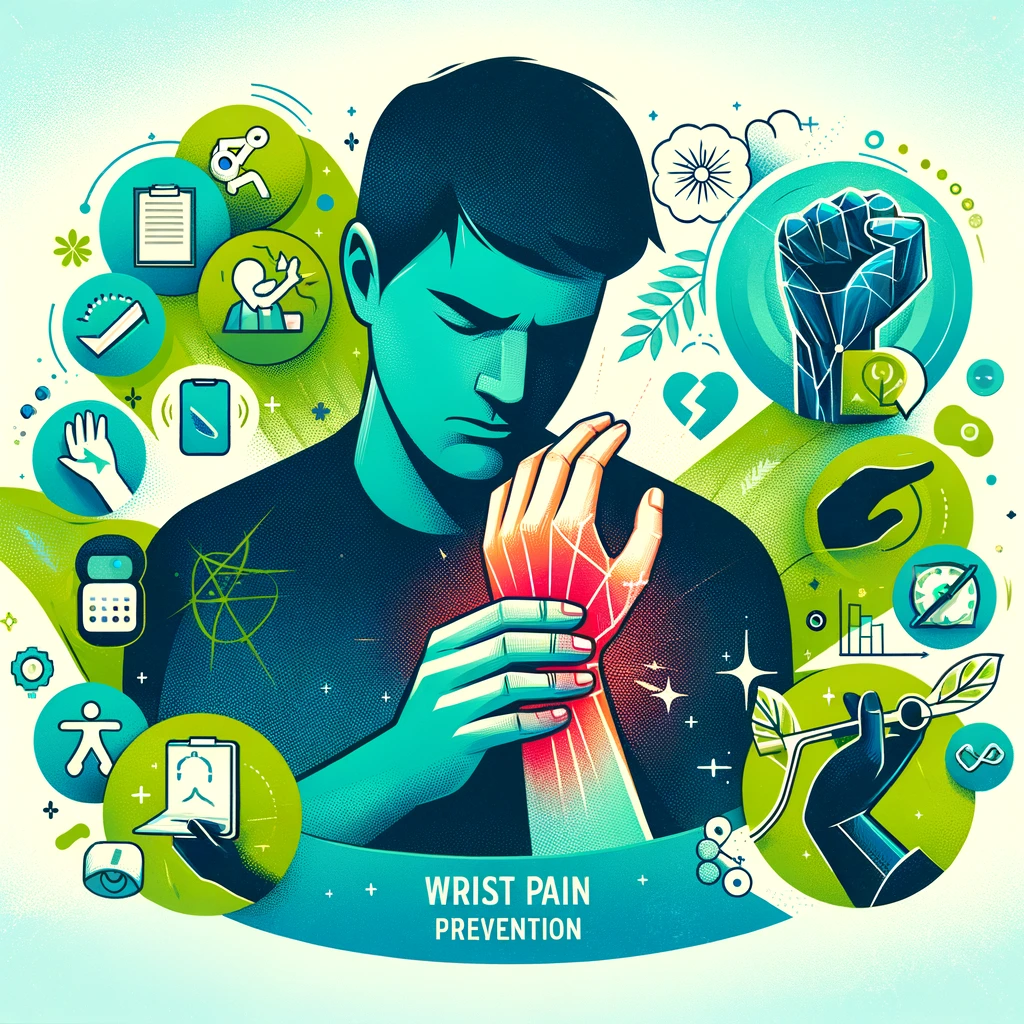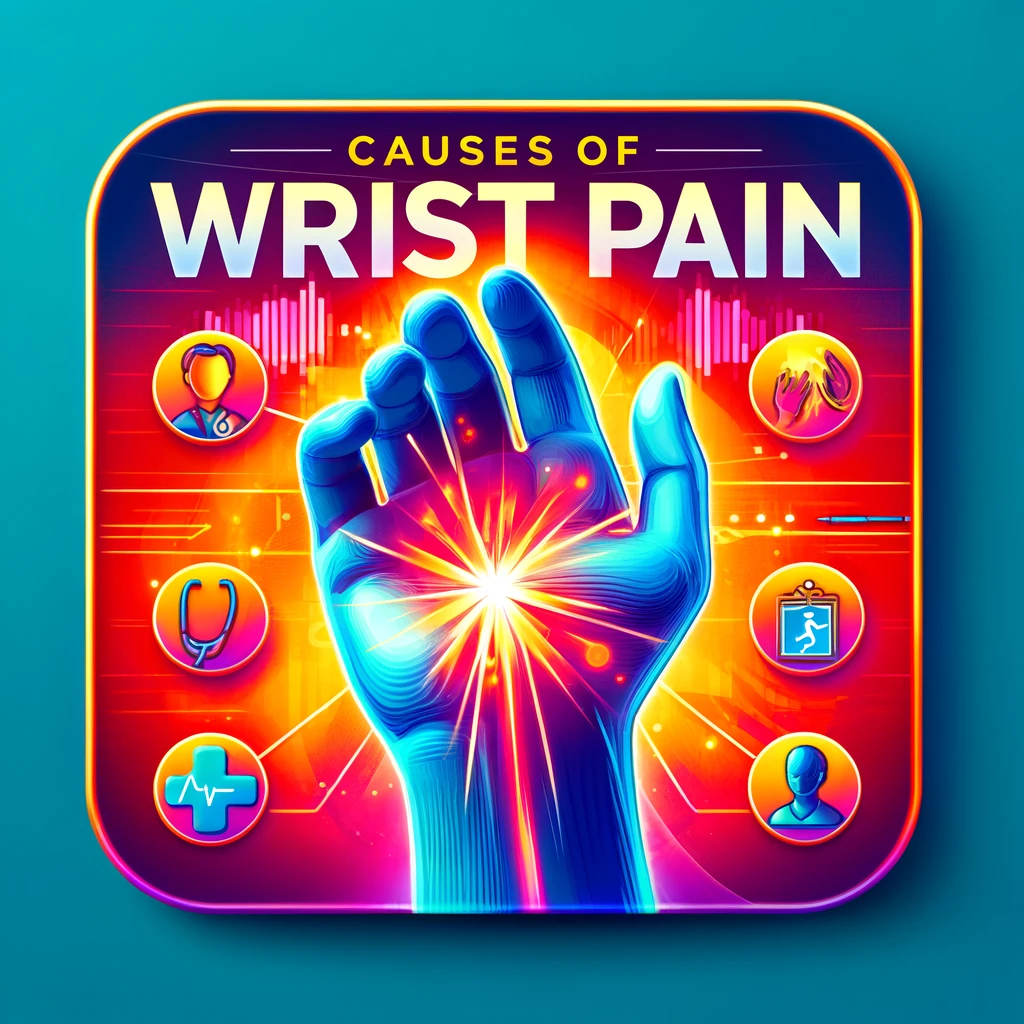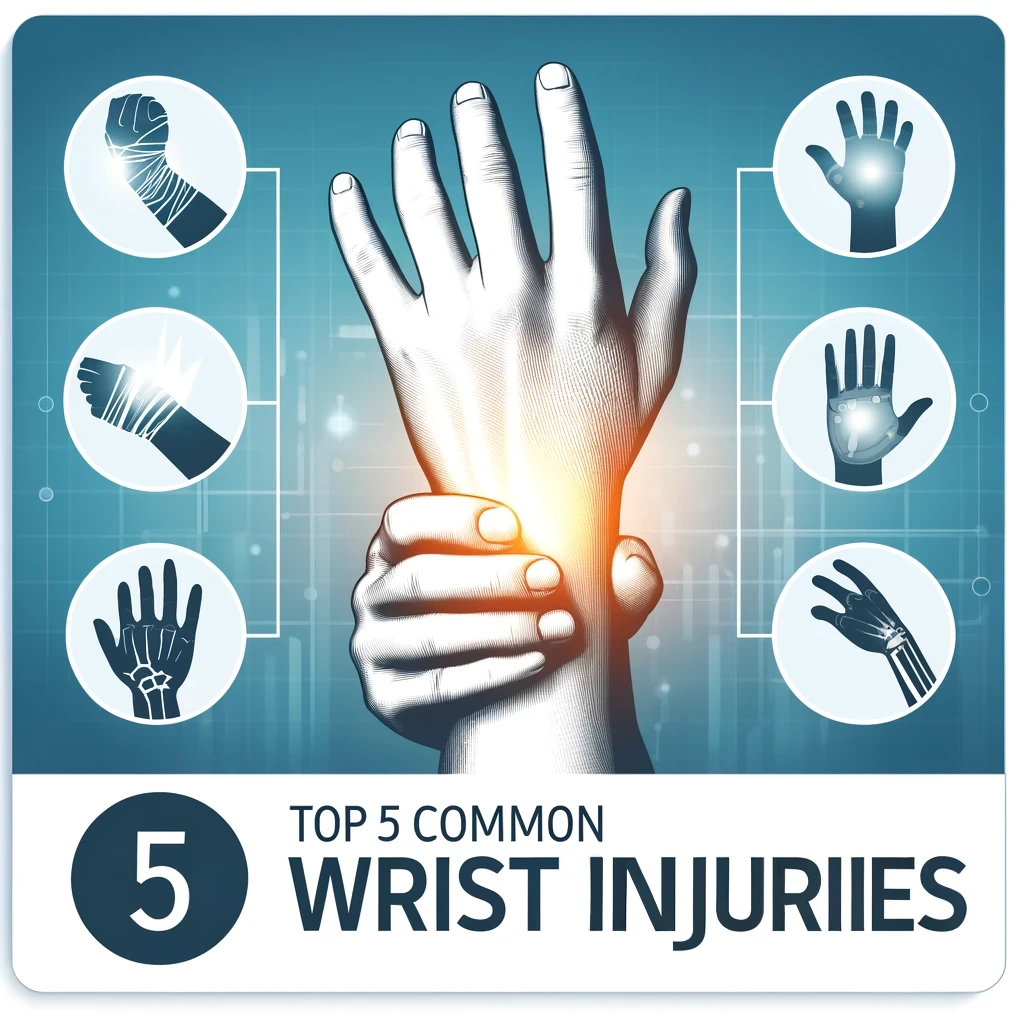
Table of Contents
Wrist pain can sneak up on anyone, whether you’re typing away at a keyboard all day or lifting weights at the gym. Understanding the causes and implementing preventive measures can save you from a lot of discomfort and downtime. Let’s dive into some of the best practices for wrist pain prevention and keeping your wrists healthy and pain-free.
Common Causes of Wrist Pain
Repetitive Strain Injuries (RSI)
RSIs are caused by repetitive motions that put stress on the wrist. Activities like typing, playing musical instruments or manual labor can lead to RSIs over time.
Carpal Tunnel Syndrome
This condition occurs when the median nerve is compressed as it travels through the carpal tunnel in the wrist, leading to pain, numbness and tingling.
Arthritis
Both osteoarthritis and rheumatoid arthritis can affect the wrists, causing pain, swelling and reduced range of motion.
Tendinitis
Inflammation of the tendons around the wrist, often due to overuse, can result in significant pain and difficulty in moving the wrist.
Recognizing Early Symptoms
Tingling and Numbness
These sensations, especially in the thumb and first two fingers, are often early signs of nerve compression or carpal tunnel syndrome.
Swelling and Redness
Visible inflammation can indicate an underlying issue like arthritis or tendinitis that needs to be addressed.
Weakness in the Wrist
If you find it hard to grip objects or your wrist feels weak, it’s a signal that you should pay attention to avoid further damage.
Ergonomic Adjustments
Proper Desk Setup
Ensure that your desk and chair are at the correct height to keep your wrists in a neutral position, reducing strain.
Keyboard and Mouse Positioning
Your keyboard and mouse should be positioned so that your wrists are straight and your elbows are at a 90-degree angle.
Using Ergonomic Tools
Invest in ergonomic keyboards, mouse pads with wrist supports and other tools designed to minimize wrist strain.
Stretching and Strengthening Exercises
Wrist Stretches
Regularly stretching your wrists can improve flexibility and reduce tension. Simple stretches can be done throughout the day.
Strengthening Exercises
Strengthening the muscles around your wrist can provide better support and reduce the likelihood of injury.
Flexibility Drills
Incorporating flexibility drills into your routine helps maintain the range of motion and prevent stiffness.
Healthy Work Habits
Taking Regular Breaks
Take frequent short breaks to rest your wrists and avoid prolonged periods of strain.
Proper Typing Techniques
Use light keystrokes and keep your wrists elevated while typing to reduce pressure on the median nerve.
Avoiding Prolonged Wrist Strain
Be mindful of activities that cause prolonged strain on your wrists and find ways to vary your tasks.
Use of Wrist Supports
Wrist Braces and Splints
Wearing a wrist brace or splint can provide support during activities that strain your wrists.
Compression Gloves
These gloves can help reduce swelling and improve circulation, offering relief from pain.
Choosing the Right Support
Select wrist supports that are comfortable and appropriate for your specific needs.
Mindfulness and Relaxation Techniques
Stress Management
Stress can contribute to muscle tension and pain. Incorporate stress management techniques like deep breathing and meditation into your daily routine.
Yoga and Meditation
Practices like yoga and meditation can improve overall body awareness and help in managing chronic pain.
Breathing Exercises
Breathing exercises can help relax your muscles and reduce the physical effects of stress on your body.
Proper Nutrition and Hydration
Anti-Inflammatory Diet
Foods rich in omega-3 fatty acids, antioxidants and anti-inflammatory properties can help reduce inflammation and pain.
Staying Hydrated
Proper hydration is essential for maintaining healthy joints and reducing inflammation.
Supplements for Joint Health
Consider supplements like glucosamine, chondroitin and turmeric to support joint health.
Preventive Measures in Sports and Physical Activities
Proper Warm-Up
Always warm up before engaging in physical activities to prepare your muscles and joints.
Protective Gear
Use appropriate protective gear like wrist guards when participating in sports or activities that put stress on your wrists.
Avoiding Overuse
Be mindful of overusing your wrists during sports and take breaks to prevent strain.
Technology and Wrist Health
Impact of Smartphones and Tablets
Excessive use of smartphones and tablets can strain your wrists. Use ergonomic accessories and take breaks to reduce this impact.
Smart Devices and Wearables
Wearables can help monitor your activities and provide feedback to improve your wrist health.
Apps for Wrist Health
There are apps designed to guide you through exercises and provide tips for preventing wrist pain.
Consulting Healthcare Professionals
When to See a Doctor
If you experience persistent pain or other symptoms, it’s important to consult a healthcare professional.
Role of Physical Therapists
Physical therapists can provide specialized exercises and treatments to manage and prevent wrist pain.
Occupational Therapy
Occupational therapists can help you modify your daily activities to reduce wrist strain and improve function.
Adapting to Individual Needs
Customizing Prevention Strategies
Tailor your prevention strategies to fit your lifestyle and specific needs.
Listening to Your Body
Pay attention to your body’s signals and adjust your activities accordingly to prevent overuse and injury.
Making Necessary Adjustments
Don’t hesitate to make changes to your routine or workspace to protect your wrists from strain.
Myths and Facts About Wrist Pain
Common Misconceptions
There are many myths about wrist pain, such as the idea that it’s only caused by typing. Understanding the facts can help you prevent and manage pain more effectively.
Evidence-Based Practices
Rely on practices supported by research and evidence for the best results in preventing wrist pain.
Conclusion
Preventing wrist pain involves a combination of ergonomic adjustments, healthy work habits, regular exercise and mindfulness. By implementing these best practices, you can reduce the risk of developing wrist pain and maintain overall wrist health. Remember, it’s important to listen to your body and make necessary adjustments to prevent long-term issues.
FAQs
Can wrist pain be completely prevented?
While it’s difficult to completely prevent wrist pain, following best practices can significantly reduce the risk and severity of pain.
Are ergonomic tools really effective?
Yes, ergonomic tools are designed to minimize strain on your wrists and can be highly effective when used correctly.
How often should I take breaks to prevent wrist pain?
Taking a short break every 30 to 60 minutes can help prevent wrist pain by allowing your muscles and joints to rest.
What are the best exercises for wrist pain prevention?
Wrist stretches, strengthening exercises and flexibility drills are all beneficial for preventing wrist pain.
Can diet really impact wrist pain?
Yes, an anti-inflammatory diet and proper hydration can help reduce inflammation and support joint health, potentially reducing wrist pain.



